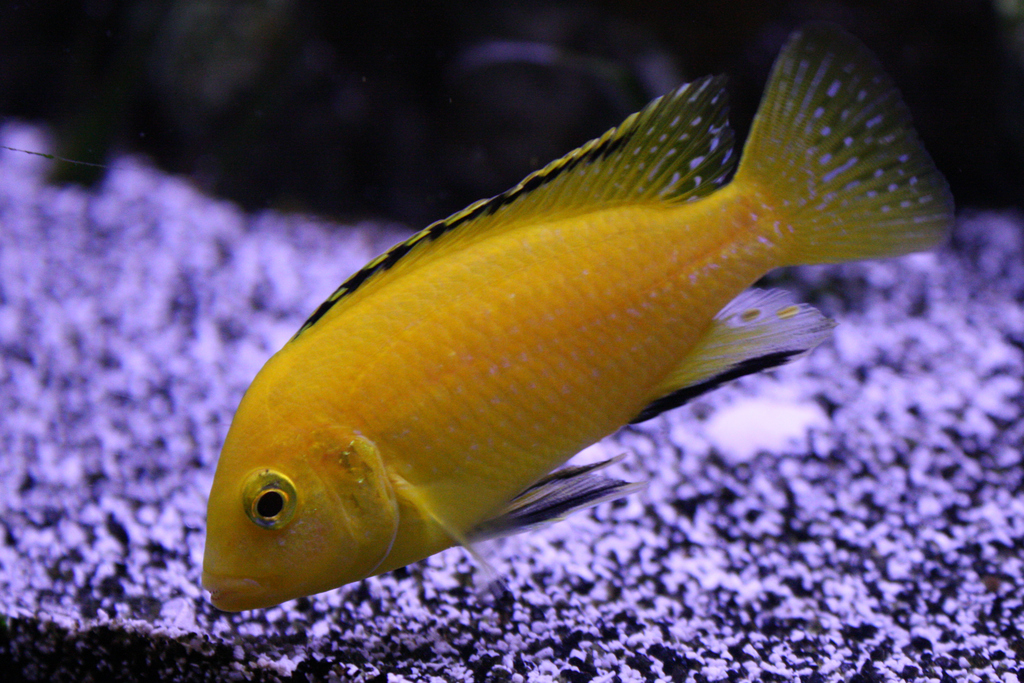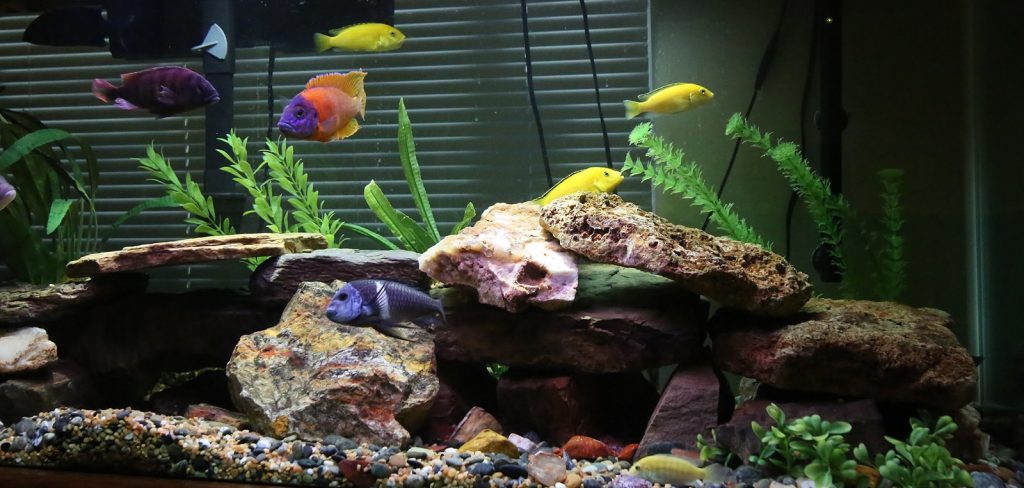The Electric Yellow Cichlid (sometimes called the Yellow Lab) is a popular tropical freshwater fish, originally from Lake Malawi in Tanzania, Africa. It’s known to be placid compared to other African Cichlids, but still shouldn’t be kept with other less-aggressive community fish.
Their popularity is often attributed to their suitability as a beginners fish. They are very tolerant to pH levels (although prefer a range of 7.5-8.5) and tend to survive well in less-than-ideal conditions.

Tank Conditions
The Electric Yellow cichlid should be kept in hard alkaline water with a pH between 7.5 and 8.5. They are reasonably tolerant of low water conditions and have been known to survive for some time in untreated tap water, although this is not recommended. The water temperature should be between 73-79 degrees (23-26 celsius), though slightly lower or higher temperatures are tolerated well.
The aquarium should include a fine substrate, hardy plants, caves, and rocks. They should be kept in the largest possible tank, with a recommended size of 50 gallons (190 liters).
Compatibility
The Electric Yellow is considered to be one of the most placid African cichlids, however they are still known to be territorial. They will show aggression towards fish of similar body shape and color.
Electric Yellow cichlids can be kept with most other African cichlids of similar size and aggression. Their semi-aggressive nature makes them incompatible with most community fish.

Diet
The Electric Yellow is an omnivore that will readily consume meaty foods and greens such as brine shrimp, bloodworm, commercial frozen cichlid food, and vegetable-based flakes and pellets. Like most fish, overfeeding should be avoided.
Breeding
It’s quite common for Electric Yellow cichlids to breed in home aquariums. Breeding usually begins when the fish reach 5-6cm in size, which takes roughly six months on a normal diet. The female will lay her eggs against a surface such as a flat rock. The male will then fertilize the eggs, which are then scooped up by the female and stored in her mouth. She will then hide for approximately three weeks while the fish hatch and grow inside her mouth.
When the fry are ready, the female will spit them out and protect them from predators. If your tank doesn’t have sufficient hiding places, you may need to transfer the fry into a separate tank or into a special fry holder. Attempting to move the female may cause her to stress and eat her own young.
Electric Yellow fry can be fed crushed flakes or pellets, brine shrimp and small amount of commercial cichlid food.
Image credits: Electric Yellow by calwhiz, Electric Yellows in mixed cichlid tank by B W.
